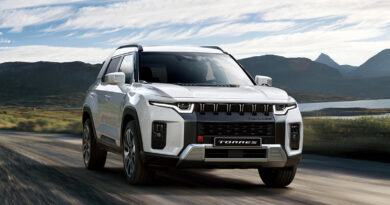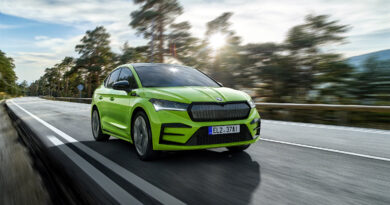Batteries included: Electric Morgan Super3 concept previews British brand’s electric dream
Morgan Motor Company has rolled out a new concept for an all-electric sports car based on
its second-generation Morgan Super3.
Called the Morgan XP-1, the new battery-electric concept is said to preview the small British
firm’s latest EV tech, rather than pave the way for a zero-emission three-wheeler Morgan.
Based on the current combustion-powered Morgan Super3, the electric version ditches the Ford-sourced 1.5-litre three-cylinder that produces 87kW and replaces it with a more powerful 100kW electric motor.
Feeding that motor is a 33kWh battery that’s combined with a 400-volt electrical
architecture that allows it to be charged at a rate of up to 50kW.
Unlike the carmaker’s current strategy which involves sourcing powertrains from the likes of
Ford or BMW, Morgan says the battery, motor and inverter have all been sourced from
suppliers and then developed in-house.
This has included calibrating the powertrain and allowed engineers to create a range of
driving modes.
Being able to refine the powertrain while honing the aero of the XP-1 has helped maximise
the efficiency and range while reducing the drag co-efficient by around 33 per cent
Helping the XP-1’s body slip through the air easier, for the first time Morgan used advanced
computational fluid dynamics software that allowed the stylists experiment with optimum
shapes virtually without having to build scale models to test in a wind tunnel.
The data captured from virtual testing prompted the use of two small side-mounted
radiators, with the left-hand side used to cool the electric motor and inverter while the right
chills the battery.
Weighing in at 700kg – just 60kg than the less powerful petrol-fed three-wheeler – the XP-1
will deliver a range of up to 240km and be capable of covering more than 160km even in
cold weather.
To preserve the standard car’s handling balance Morgan says the electric motor and the
inverter are hidden in the place where the Mazda-sourced five-speed transmission used to
live while the heavy battery has been placed under the bonnet.
New tech developed for the XP-1, that replaces the old EV3 prototype, includes the Morgan
engineers exploring ways to enhance the natural noise of the electric motor, rather than
piping in fake soundtrack.
Within the cabin there’s a bespoke TFT display that represents the four different driving
modes using chillies – much like the way some restaurants use them to explain how hot a
dish is. Each mode then offers different throttle maps and alters the amount of brake regeneration.
Taking 12 months to design and build, Morgan says the XP-1 will now be subjected to a
further 12-18 months of extensive testing but even after all that work the battery-powered
three-wheel sports car still won’t be offered for sale as the marketing boss has reportedly
admitted that the electric Super3 isn’t in the car-maker’s two-, three- or four-year plan.
Instead, the XP-1 thinking will be transferred to Morgan EVs of the future.
Commenting on the development of the Morgan’s latest XP-1, chief technical officer Matt
Hole said: “We are immensely proud to be sharing XP-1 with the world and showcasing
some of the first-class engineering that takes place behind the scenes at Morgan.
“We are in no doubt that we can ensure future electric Morgan sports cars retain the core
appeal of our current range, meaning they are fun to drive, lightweight, handcrafted and
bespoke.”
Morgan isn’t the only small British car-maker to be developing EVs for the future with
Surrey-based Caterham already well underway in its bid to produce its own all-electric
powertrain for its latest Project V sports car that it will launch by 2026.




